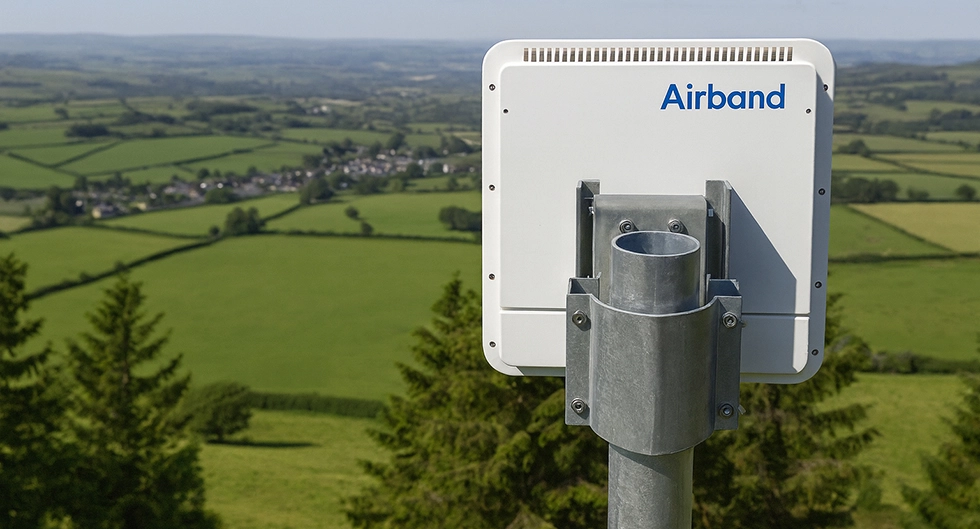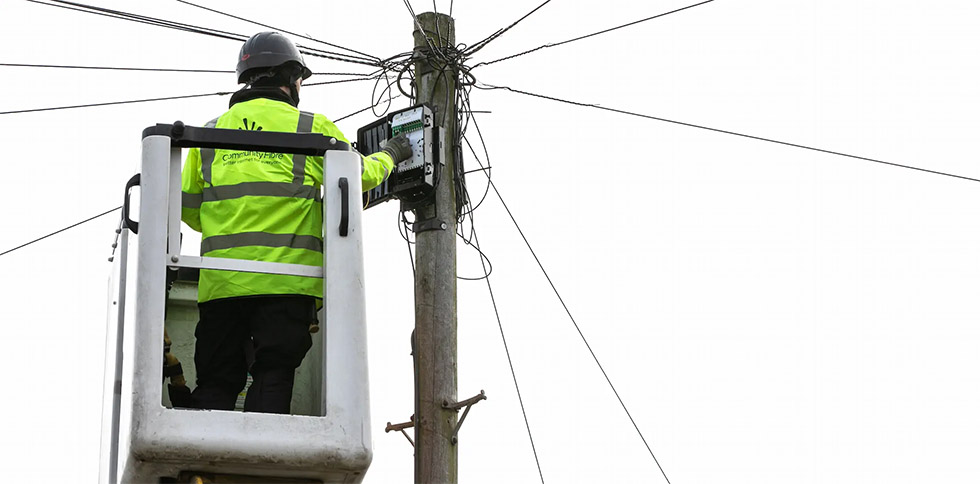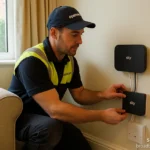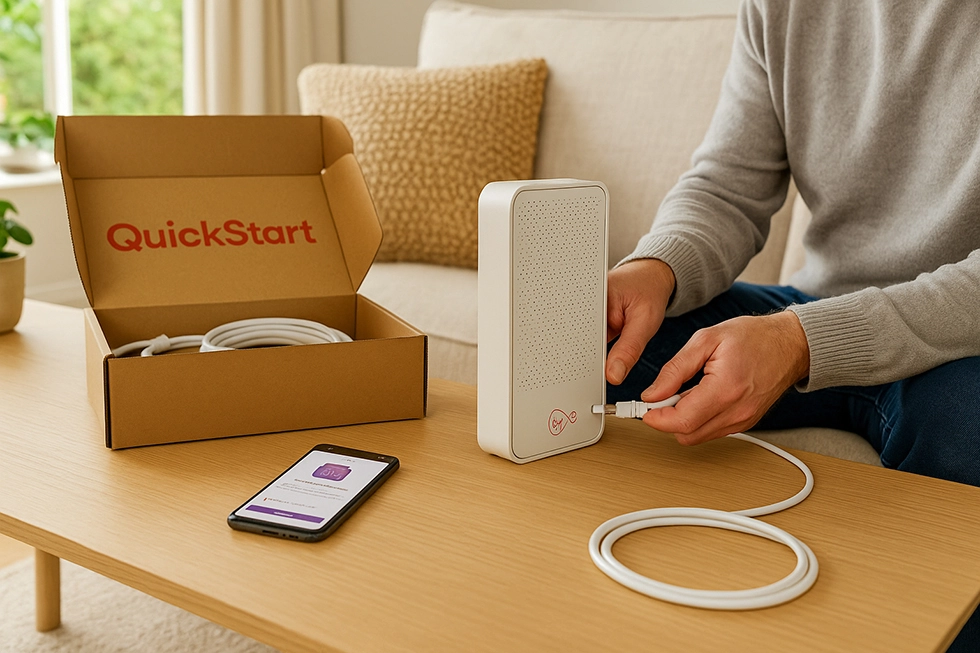Airband has started using Openreach’s full fibre network to serve addresses where its own infrastructure isn’t present. It means that customers in rural or hard-to-reach areas, who previously couldn’t get Airband services, may now see Openreach-based fibre packages when checking their postcode.

This move brings Airband into line with other alternative networks that have already taken a wholesale approach, extending their coverage beyond their own fibre and wireless footprints.
Who is Airband?
Airband is a rural-focused broadband provider best known for building its own fibre-to-the-premises (FTTP) network and running fixed wireless access (FWA) in areas where fibre rollouts are more complex. It currently claims to cover more than 440,000 premises across seven counties in Wales and the South West of England, split between around 175,000 fibre addresses and 265,000 wireless addresses.
The company has backing from investment firm abrdn, which has put over £200 million into its expansion plans. Airband has said it aims to close 2025 with about 30,000 active customers.
Read our Airband broadband review
What’s new
If you put an address into Airband’s checker and it falls outside of the provider’s own footprint, you’ll now be offered Openreach FTTP deals instead. These appear as discounted packages, starting from around £30.50 a month for 160Mbps download speeds and rising to roughly £39.50 for gigabit service.
All of these plans currently come with a 12-month contract, free installation, a Nokia Wi-Fi 6 router, and a gift card incentive.
Alongside this new option, Airband has recently added SoGEA-based broadband (which uses Openreach’s fibre-to-the-cabinet lines without the phone service) and a 4G home broadband product. This means that Airband now has a much wider set of tools to connect homes, whether through its own FTTP, fixed wireless, Openreach wholesale, or mobile-based services.
Why Airband is broadening its reach
Smaller ISPs and altnets face a common challenge: they invest heavily in their own fibre builds, but customers who move house or live just outside those builds are lost opportunities. By adopting Openreach’s full fibre in off-net areas, Airband can continue serving those customers rather than handing them over to bigger providers.
The timing makes sense. Openreach has now passed around 20 million homes with fibre, with plans to reach 25 million by the end of 2026. Wholesale access is widely available, and Ofcom has recently said it doesn’t see immediate concerns with Openreach’s fibre pricing discounts designed to increase adoption.
Other providers have made similar moves. Hyperoptic and Netomnia, for example, both now offer Openreach-based services outside their own networks. It’s a way for smaller players to compete on reach without waiting years for new builds.
How it’s going so far
Airband says it has already switched more than 500 customers to these new services in the first 100 days. The company expects that number to grow quickly over the coming months as awareness spreads and more addresses show availability.
How customers rate the service
Feedback on Airband is mixed but generally positive. On Trustpilot, many customers have praised quick installations and good customer service, though some reviews mention delays or inconsistent speeds, particularly on wireless connections. Forum discussions highlight the usual issues with rural deployments: when fibre is installed, speeds tend to be reliable, but in wireless areas, performance can vary depending on conditions and distance from masts.
The addition of Openreach fibre should help bring a more consistent option to households in those rural fringes where wireless has limitations.
What this means for rural households
For rural users, this change increases the chances of getting a fibre option even if Airband hasn’t built locally. When checking availability, the offer might be:
- Airband’s own FTTP, if the premises are inside its fibre build
- Airband’s fixed wireless, if fibre isn’t in place but line-of-sight wireless is available
- Openreach FTTP, if neither of the above is present
- SoGEA or 4G broadband, as fallback options
This variety makes it more likely that customers in hard-to-reach areas can secure a reliable high-speed connection without waiting for years of new network build.
Things to check before signing up
Because Airband now offers several different types of broadband depending on location, it’s worth being clear about what’s being delivered. When ordering, customers should confirm:
- Whether the connection will be Airband FTTP, Openreach FTTP, FWA, SoGEA, or 4G
- What the upload speed is, as this can vary widely across technologies
- What the total 12-month cost will be once incentives and discounts are included
- Which router model is supplied, and whether mesh or booster options are available for larger homes
Comparing with other providers
Openreach’s fibre is used by most of the big names—BT, Sky, TalkTalk, Plusnet, Vodafone, and more. That means Airband’s Openreach-based packages can be directly compared with offers from those providers on the same lines.
In some cities and towns, other altnets such as Hyperoptic, Community Fibre or CityFibre may offer symmetrical fibre services, often at similar or lower prices. Checking those alternatives is worthwhile before committing.
What this means overall
Airband’s shift reflects a wider change in the broadband market. Full fibre rollouts are happening at speed across the UK, but adoption rates still lag behind availability. For smaller ISPs, wholesale arrangements are a way to grow their customer bases without overextending financially.
For customers, it means more providers at the table when they check their postcode. For the industry, it’s another sign that competition will increasingly come not only from who builds the fibre but from who can best sell and support services on top of it.










